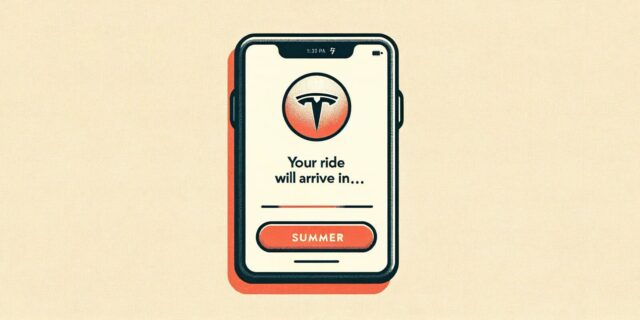What’s going on here?
Elon Musk teased the launch of robotaxis, a bid to get Tesla’s stock price from A to B autonomously.
What does this mean?
Tesla’s preparing to get robotaxis closer to the tarmac from this August, seemingly determined to make headway while its sales in China are being nabbed by rival electric vehicle (EV) manufacturers. That’s long overdue: Elon Musk promised investors the fully self-driving vehicles back in 2019, and the hype is believed to have puffed up the carmaker’s valuation. Tesla has started by pushing out the latest update of its driver-assistance technology to customers, while dropping hints about both the robotaxi and an affordable, next-generation car – the latter of which comes with a steering wheel, just in case.

Why should I care?
Zooming out: Hype doesn’t pay the bills.
Musk’s penchant for dramatic product reveals has allowed Tesla to drum up excitement without shelling out for traditional ads. That said, Tesla’s signature newsworthiness hasn’t always shown up in its bottom line – the Cybertruck is a prime example of that. Tesla’s stock price might be hanging in the balance, then: research from DataTrek suggests that 76% of Tesla’s value hinges on what the company can make down the line. So without crystal-clear earnings prospects or a robust plan for profit, the EV maker needs robotaxis to boast a launch smooth enough to convince investors of their potential.

The bigger picture: The price needs to be right.
Stateside shoppers have filled their driveways with cheaper hybrid models instead of EVs lately, making it clear that price beats any gadget or green accolade. That’s probably why Tesla is still working on a budget-friendly EV – although at around $25,000, even the most affordable model is twice as expensive as Chinese rival BYD’s cheapest offering. Not everyone is plodding away, though. Apple and Ford have pulled back from EVs, daunted by the fierce competition outside of the US.








